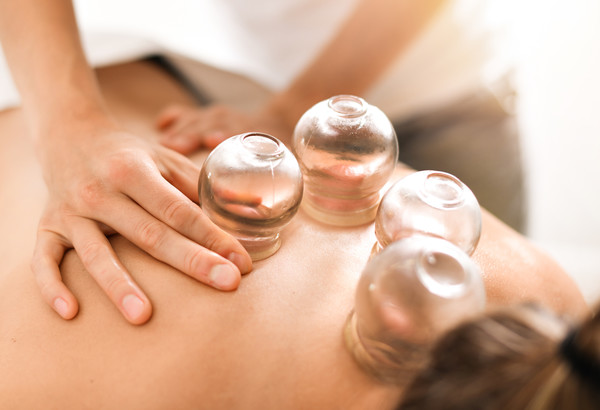Cupping


Have you ever wondered what all the rounded bruises are on athletes during the Summer Olympics? Cupping therapy (also known as myofascial decompression) is an ancient form of alternative medicine which has gained tremendous popularity in recent years. This technique is performed by a practitioner using a rubber pump to create a vacuum with special cups directly on the skin. The decompression provided by the pumping/cup mechanism lifts the soft tissue layers and can increase hydration, increase blood flow, and decrease muscle adhesions. This technique can be used to treat musculoskeletal injuries or inflammation and can used as a pain relief method.
What is cupping and why is it performed?
Therapists use cupping as a technique of tissue distraction release. The cups are glided across different areas of skin to lift and separate tissue. It enhances the release of the interfaces between the neural tissues, fascia, skin, ligaments, muscles, and tendons. Some patients with myofascial pain report resolution of pain after just one session. Some evidence suggests that cupping techniques are effective for chronic neck pain, low back pain and fibromyalgia. It has also been shown to relax muscles, release trigger points, improve lymphatic flow, increase local circulation, and release scar tissue adhesions.
The three cupping techniques are longitudinal, cross fiber, and circular. The longitudinal technique is the most common, and the cup is glided longitudinally across the muscle fibers. The cross-fiber technique is used when it is believed that the tissue is scarred. The circular technique is used at the end of the session to ensure that all areas were covered.
How is cupping performed?
A therapist utilizes a rubber pump to create a vacuum between the cup and skin. It causes the skin to rise and the blood vessels to expand. Sometimes, silicone cups are used to create a massage effect. During a cupping session, a therapist places round cups directly on your skin. The therapist may leave the cups on your skin for several minutes or may glide them across a region. You may be performing exercises while cupping is performed.
Cupping uses negative pressure forces on suction cups to create lifting of the tissues. This creates space within the tissue layers for improved gliding and mobility. We have many layers of tissue, including skin, fascia, muscle, etc., that should move fluidly, but due to injury, inflammation, and/or the normal aging process, the tissues can become thickened and less mobile. By creating suction with negative pressure, the cups can increase hydration and blood flow to body tissues, ease up adhesions, rid excess fluids, and reduce connective tissue restrictions. Cupping is a versatile treatment and can be modified from deep tissue release to lymphatic drainage.
What are the benefits of cupping?
There is real science behind cupping therapy. Unlike other forms of manual therapy (massage, myofascial release, IASTM, joint mobilizations) that are compressive in nature, cupping is decompressive. Decompression helps release tight tissues, improve trigger points, increase blood flow, improve nutrient exchange, and create change to the neuromuscular system which will allow for pain relief.
What are the conditions it can treat?
The use of cupping has evolved and today it is widely used for pain relief, musculoskeletal injuries such as sprains, back injuries, and inflammation. It is believed that the suction created by the cup encourages blood flow and this increased circulation may promote healing and reduce pain. It can also be used as a form of deep tissue massage and relaxation.

